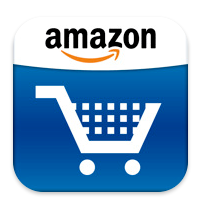
Will you buy Google Chromebook?
Acer and Samsung Chromebooks are now available for preorder. Interest is so great it took a tweet from Google today for much of anyone to know about the sale. The Chrome OS-based laptops are available from Amazon and Best Buy. Hey, right now! Official launch is June 15 -- that's right, in six days.
My question for Betanews readers is easy: Will you buy Chromebook? Prices range from $379.99 to $499.99. Please answer in comments or email joe at betanews.com -- and, of course, everyone wants to know your reasons. Please give them.

DropIn monitors Dropbox folders so you don't have to
Dropbox is a versatile tool: it's used for backing up, syncing and file-sharing, but it's not without its drawbacks. Like any other folder on your Mac, you only know something has changed when you manually check it. That might not be a problem if your Dropbox folder is kept for personal use, but if you're using it as folder repository for the purposes of collaboration or work, you might wish you were more in the loop with any new or updated files that arrive from other sources.
What you need is some kind of notification, alerting you to any updates to your Dropbox folder. And guess what? We have just the solution -- if you're a Mac user at any rate -- in the form of the small, but perfectly formed DropIn. It offers an elegant and highly configurable means of keeping you fully informed. And at just $1.99, it won't break the bank either.

Are you unhappy Apple is killing MobileMe? You're not alone
Editor's Note: On June 6, Apple CEO Steve Jobs announced that iCloud, an online synchronization service, is coming in the Fall. iCloud will replace MobileMe, and Apple isn't waiting around for the new service to launch. MobileMe has stopped taking new subscribers and has extended existing customers' service for free. MobileMe will close on June 30, 2012. But iCloud is a much different service, which has upset many subscribers for what they're losing and for what they paid ($99 or more).
Apple is bringing us a laughably monikered upgrade to MobileMe called iCloud, and when you strip away the hype and Steve Jobs reality distortion field, iCloud is a proprietary, convoluted and highly restrictive sync-backup service.

What happens when you download iTunes past purchases with a different account?
I can answer that question for you. Apple locks up your past purchases for 90 days, and you can forget that Monopoly game get-out-of-jail free card. But that's OK.
It was a big day for Apple yesterday, announcing iCloud and new push sync features from iTunes Store. It's a big day for Apple customers, now that iTunes 10.3 is available -- with purchase sync in beta. The utility is simply amazing for what Apple intends for it -- but also for how customers might choose to use it.

iTunes 10.3 -- now available! Redownload past purchases to all your Apple devices
The latest version of Apple's flagship software iTunes has been released. The big news in iTunes 10.3 is support for the new iCloud service that can be used to automatically download apps, music and other purchases -- this is being labeled as iTunes in the Cloud. There is also newly added support for iBookstore which enables users to purchase ebooks from within iTunes.
iCloud is the replacement for MobileMe and will be made available to users completely free of charge. Once content, such as an app, has been purchased it can then be re-downloaded on any other compatible device without the need for payment. The purchasing options available in iTunes have been extended with the introduction of iBookstore that can be used to browse and buy a selection of ebooks that can be downloaded and synchronized in the same way as apps and music.

MobileMe isn't just free, it's going away
That's right. During Apple's Worldwide Developer Conference today, CEO Steve Jobs said that MobileMe's price would drop from $99 to free. But there's more to it. I just received email from Apple stating the service will retire in little more than year.
No surprise, iCloud, which Jobs announced today, will replace MobileMe. How many times is Apple going to change the name and function of its online service, I wonder. Anyone remember iTools, which Apple debuted in January 2000? That was a free service, too. Then in summer 2002, Apple unveiled .Mac, which would replace iTools and institute a yearly subscription fee.

5 things you should know about Apple iCloud
I'm having freaky sense of déjà vu, today. Apple may be late to cloud computing, but what's that saying about better late than never? Late has worked for Apple before, and I expect it to do so again.
Apple was late to music, when it launched iTunes in January 2001. The Napster revolution was well underway and Windows PC manufacturers shipped CD-RW drives. Now look at Apple and music. Apple was late to smartphones and tablets. Now it has shipped 200 million iOS devices, 25 million of them iPads -- in just 14 months. The list is longer, but you get the point.

Apple unveils iCloud -- real-time sync for the post-PC era
Apple CEO Steve Jobs today dispelled the rumors surrounding the company's new cloud service. For months, the rumor mill churned out thousands of webpages of guesses about iCloud. Would it be a cloud-based music locker, MobileMe revamp or something else?
Simply stated, iCloud is a synchronization service for pushing data out to all your connected devices. Jobs introduced the service during the Worldwide Developer Conference keynote this afternoon. For more than a half decade, I've said that synchronization is the killer application for the connected world.

Microsoft buzz cuts Apple: Leaks Kinect Fun Labs
Apple may be generating loads of rumors this morning, but Microsoft has got some noise to make, too, even if done accidentally -- or accidentally on purpose. Hours before Apple Steve Jobs takes the Worldwide Developer Conference stage (1 p.m. EDT) or Microsoft's E3 keynote (12:30 p.m), several Xbox announcements leaked: Kinect Fun Labs and some new games, including Halo 4.
I say accidentally on purpose, because Microsoft's leaks cut into Apple noise before it drowns out most other tech news today. Jobs' keynote will unveil iCloud, which has generated more rumors than, well, storm clouds drenching rain. The Apple fan club of bloggers and journalists are sure to drown out pretty much everything else. So, Microsoft's leak, whether or not intentional, is timely -- and it may lead more people to tune into the E3 keynote. Microsoft is streaming its keynote; Apple is not. LOL, you have to enter your birthdate to watch the Kinect keynote and other content.

AmazonLocal brings daily deals to Boise, Idaho, but not to you (yet)
Amazon apparently is getting into the Groupon coupon-like business by aggregating deals from LivingSocial. But don't rush out to the AmazonLocal website, unless you live in Boise, Idaho. That appears to be the only city where there are local deals.
Tip of the hat goes to TheNextWeb for uncovering AmazonLocal and its apparently one-city offering. I've got a call in asking for more details and will update this story should Amazon respond.

Google begins killing off support for older browsers -- well, not that old
Wouldn't it be funny if Google turned out to be the Internet's security cop? That's one way to interpret the search and information giant's continued push to clear away aging web browsers. First Internet Explorer 6, now Firefox 3.5, IE7 and Safari 3. Google will stop supporting these latter three browsers two months from today.
Google's reasons have nothing to do with security, but there could be a safety benefit. Let's face it, major developers invest more in their newest browser versions. More significantly, Google, Microsoft and Mozilla are now on fast development tracks, with new browser milestones coming every six to eight weeks. For example, Firefox 4 launched in late March with great fanfare -- 6 million downloads in 24 hours -- yet version 7 Nightly builds are already available for download. Firefox 5 is scheduled to release on June 21.

Genie Timeline Cloud grants your wish for online storage
Genie9 Corporation, the company behind the Genie Timeline backup tool, has introduced a new cloud-based backup for businesses and families. Timeline Cloud features the usual cloud-based backup tools, plus adds in some unique features that could prove invaluable for businesses and families.
The most notable feature offered is Cloud Disaster Recovery, which makes it possible to restore a computer to working order via the Internet or network. Timeline Cloud is also designed to be administered from the web, allowing one person to set up and manage backup policies for employees or other family members. Genie9 claims that configuring backup plans takes just five minutes.

Perhaps Microsoft didn't overpay for Skype after all
According to Pew Internet, nearly one quarter of American adult Internet users have placed phone calls online. That works out to 19 percent of U.S. adults. Hell, this is but one country -- with huge built-up telephony infrastructure. What about the world?
"On any given day 5 percent of internet users are going online to place phone calls," according to Pew. That may seem like a small number, but it's part of a big trend. The chart above -- and the steep climb in number of people who call online -- is graphic enough. The number of Internet users making online calls since April 2007 climbed from 8 percent to 24 percent three years later.

Apple looks to steal Computex and D9 thunder with iCloud
In a simply unprecedented announcement -- well, since founder Steve Jobs' return as chief executive 15 years ago -- Apple tipped off a new product coming next week. Before Wall Street's opening bell this morning, the company dropped a press release explaining that Jobs would present next week's Worldwide Developer Conference keynote and that the new iCloud service would be announced. Jobs and team also will unveil Mac OS X "Lion," which was expected, and the next version version of iOS.
From a competitive buzz perspective, surely Apple is looking to steal some thunder coming from Computex, which opened earlier today in Taipei, and the D9 conference, which starts tonight here in California. Both venues will produce major news ahead of WWDC. Intel kicked off Computex by announcing new chips, a new tablet platform and Ultrabook, a portable category competitively aimed at Apple's MacBook Air and iPad. Google Chairman Eric Schmidt will be D9's first-day headliner. Apple has little to no direct presence at either event.

Want to sync bookmarks across browsers? Xmarks the spot
These days, an increasing number of browsers, including Chrome and Firefox 4, make it easy to access the latest version of your bookmarks from any computer you own thanks to built-in sync. The problem is that these proprietary sync technologies will only work with the browser they're designed for.
If you're wanting to switch from one browser to another, or you don't want to tie yourself to a single browser, you'll need a third-party solution in order to keep your bookmarks in sync across all machines and browsers. That solution comes in the form of a free add-in called Xmarks, which is available for various browsers, including Firefox, Chrome, Safari and Internet Explorer.
